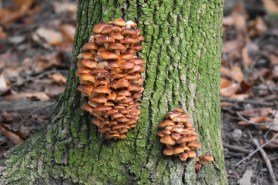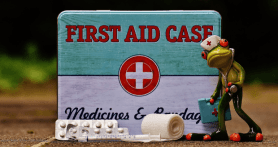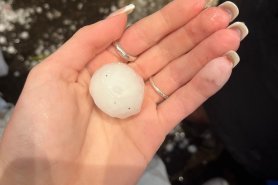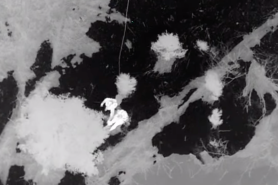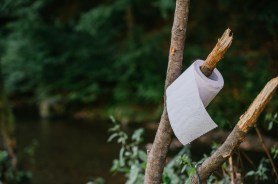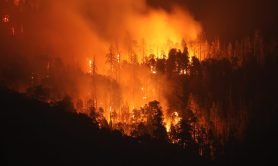

Blisters. We’ve all had them. You’re just enjoying yourself on the mountain or hiking trail when you feel that nagging little hotspot.
Bear Grylls, who has spent most of his life on his feet covering rugged terrain, has come up with some nifty ways of dealing with them—and they must be dealt with.
“There’s an old army saying: A soldier is no better than his feet,” says Bear in How to Stay Alive. “It’s true of anyone in a survival situation.”

A blister often starts out small, but if you don’t deal with it, and are relying on your feet to keep you alive, it could prove debilitating—or even fatal, if infection sets in. Fortunately, Bear has a few tricks up his sleeve, er, sock(?), for preventing these pesky sores and coping if one pops up.
Toughen up your feet
Bear recommends preparing your feet to make them less prone to blisters. That means getting your feet rugged and well-calloused—and the best way to do this is to get out and walk or train.
“The more you do it, the harder your skin will become in all the places where it needs to be tough,” says Bear.
You’re nearly guaranteed to get a blister if you’re walking in new shoes or boots. Bear has often seen people with a brand-new pair of hiking boots at the start of a three-month trek, and he knows they’ll have trouble.
“I’ve experienced that myself during simulated basic training with the French Foreign Legion,” he says. “We were given new leather boots on our first day and ordered to walk for miles across the desert. By the end of the day, our feet were bloodied and our group of tough guys were hobbling around.”

Break your boots in
If you’re heading out on a trek, you must break in your boots first. The idea is to soften them up and mold them to your feet. If they’re made of leather, getting them wet and dry several times can do this.
“A good trick is to put them on, lace them up and stand in a bowl of hot water for a couple of minutes. Then walk around in them for a while and let them dry,” says Bear in How to Stay Alive.
Make sure you wear good-quality wool or synthetic socks and change them often, as damp, sweaty socks—and any made of cotton, which take forever to dry when wet—increase the chances for a blister. Well-fitting shoes and thicker socks both can buffer any rubbing.
At the end of the day, always take your wet socks and boots off, clean your feet, add baby or foot powder—“Marines call it ‘foo foo powder,’” says Bear—and put on some dry socks.

Don’t ignore hot spots
Even if your feet are good and calloused and your shoes fit perfectly, you can still get a blister. Pay attention to any “hot spot” that might come before a blister—you will feel a localized burning sensation on your foot while you’re walking—and don’t ignore it.
One thing Bear always carries in his first aid kit is a roll of zinc oxide tape, which climbers often wrap around their fingers for protection and can work well to protect a hot spot before it becomes a blister. To use, take off your shoe and put a strip of zinc oxide covering the hot spot, which will probably also be redder than the surrounding skin. You can put tape around the back of your heel, under the arch of your foot and around your toes as a preventative measure.
“Keep it there as long as you need to. I once had the same strip of zinc oxide stuck like superglue on my feet for a month,” says Bear. “It’s a bit skanky when it comes off—but no blister.”
Baby your blisters
First of all, try not to pop it, as the liquid over the wound keeps it sterile. But if this is not possible and it’s going to burst anyway, you can carefully puncture it with a needle, sterilized first in hot water or over a hot flame. Gently massage the liquid out of the blister but keep the dead skin in place as a protection layer.
If you have a needle and thread, thread the needle (after sterilizing it), and pierce it into one side of the blister and through to the other side. Leave a small amount, about a quarter inch, of thread hanging from either side of the blister. This will allow the blister to drain along the thread without you having to touch the blister with dirty fingers.
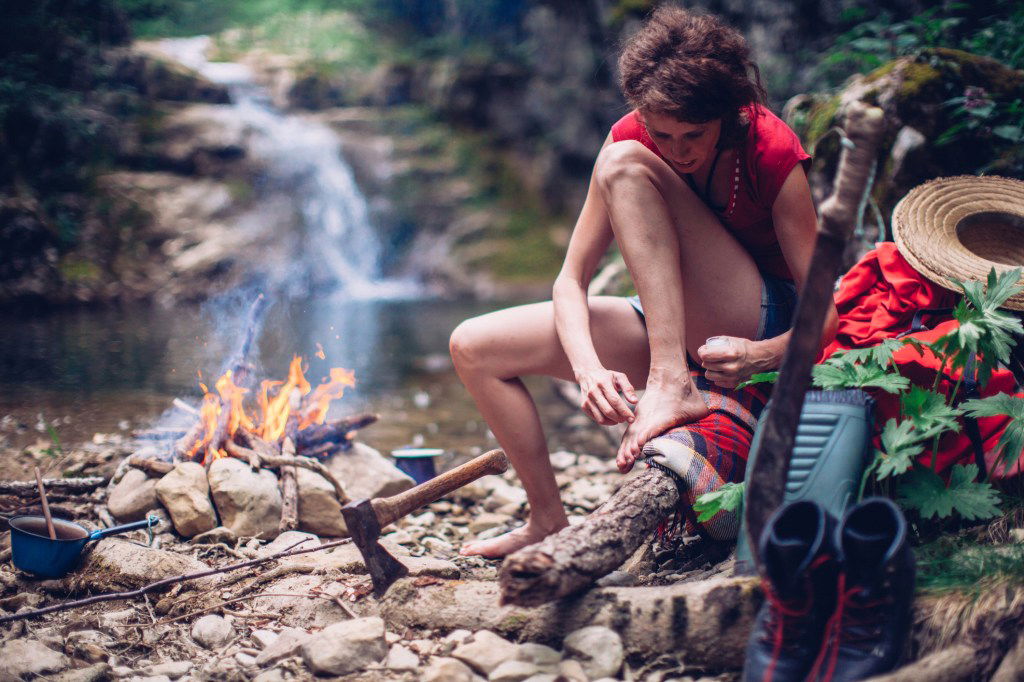
Avoid infection
Blisters, like any other wound, can become infected, so you need to keep them scrupulously clean. Clean water is useful for this; antibiotic lotion or rubbing alcohol is better.
“In extreme cases, you can squirt some superglue into the burst blister. It’ll hurt like hell, but will form a hard protective covering for the wound,” says Bear.
Once you’ve cleaned the blister, cover it with a bandage or tape, and do everything you can to keep your socks dry.
“Be on the look-out for smelly pus, swelling, heat, and spreading redness,” says Bear. “These are all signs of infection.”


